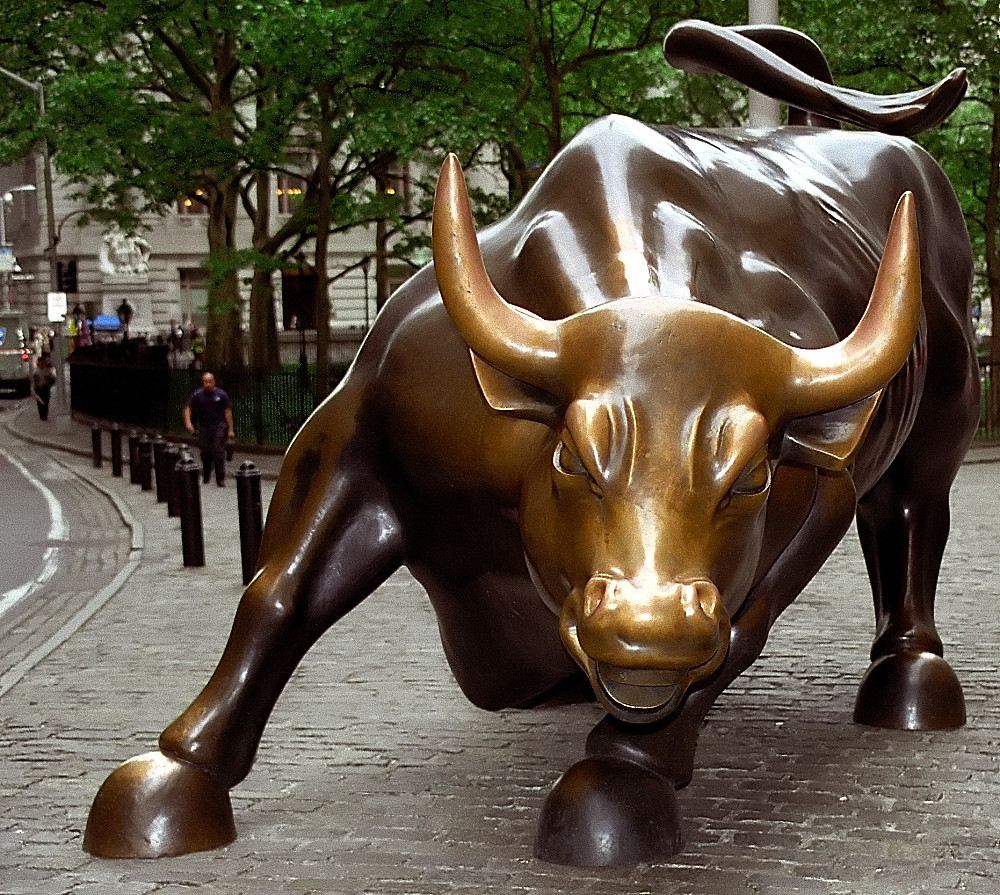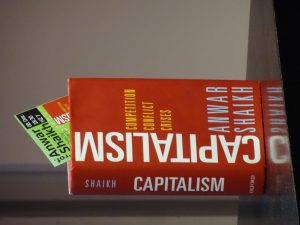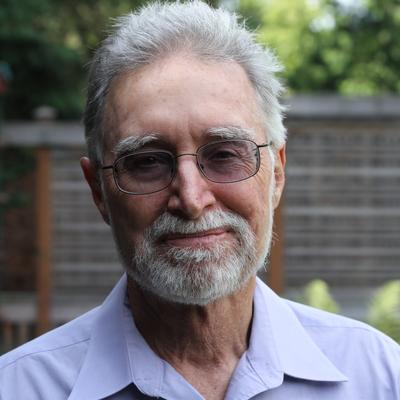Modern Monetary Theory and Inflation – Anwar Shaikh’s Critique
✑ NICK JOHNSON ` ╱ ± 8 minutes
A wise and benevolent state can ‘print’ money to achieve full employment and moderate inflation, MMTers say. Economist Anwar Shaikh shows there are limits to this policy, imposed by the rate of profit.
Also see Nick Johnson's other article on Anwar Shaikh's economics: Anwar Shaikh’s Classical Theory of Wages and Unemployment
NOTES
1 Editorial note: In his book Shaikh refers to 'neo-Chartalism', as MMT is also sometimes called.
‟There are a number of problems with MMT and its associated policies.
A wise and benevolent state can ‘print’ money to achieve full employment and moderate inflation, MMTers say. Economist Anwar Shaikh shows there are limits to this policy, imposed by the rate of profit.
From: The Political Economy of Development (8/7/17) ╱ About the author(+)
Nick Johnson has an MSc in development economics from SOAS, University of London, works for a charity, is passionately interested in economics and how it can be used to promote sustainable human progress. His personal blog: The Political Economy of Development. On twitter: @nickj_econ.
Last week I posted several times on Modern Monetary Theory (MMT), a set of ideas which seems to have plenty of support, or at least generates plenty of debate, judging by its presence on the internet.
MMT is an offshoot of post-Keynesianism. The policies which flow from its main theses suggest that a wise and benevolent state can ‘print’ money, within certain limits, to achieve full employment and moderate inflation.
Some MMTers also support an Employer of Last Resort (ELR) function for the state too. In other words, the state should provide a job at a set wage for all those who want one, so that full employment can be sustained even when economic growth slows or the economy goes into recession. The ELR policy was supported by Hyman Minsky whose ideas have also influenced MMT. He saw it as a more productive alternative to forms of welfare which pay people while they are inactive in terms of formal employment.
MMTers support ‘functional’ government finance, so that aiming for a balanced government budget should not be the rule, rather fiscal policy should support the goals of full employment and moderate inflation.
If the economy is underperforming, MMT might put this down to inadequate aggregate demand, so that by allowing the budget deficit to increase, this can be mitigated or even prevented.
If the economy is overheating, with rising inflation, MMT puts this down to excess demand, so that a smaller deficit or a surplus (with tax revenue greater than public spending), will solve this problem by withdrawing money from circulation.
MMT does not deny that inflation can be created by excess demand, but this can apparently be managed via fiscal and monetary policy.
For MMT, interest rates should generally be set at a low level and kept there, to avoid any ‘crowding-out’ effect of the budget deficit on private investment.
Anwar Shaikh, an economist whose work falls largely within the Classical tradition, although he also draws on some Keynesian ideas, has set out his own theory of modern money and inflation in his book Capitalism. In doing so, he offers a critique of MMT.
Shaikh argues that there are a number of problems with MMT and its associated policies.1
Firstly, it ignores the effects of profitability on growth, employment and inflation.
Secondly, it assumes away class conflict between capital and labour, so that workers are passive in their behaviour.
Thirdly, the labour supply is not fixed, so that labour is not the main constraint on growth. A tighter labour market can lead to rising labour force participation, or higher labour-saving productivity, while governments can relax immigration controls.
Fourthly, it assumes mark-up pricing by firms, so that imperfect competition is the norm. Firms therefore have a degree of monopoly power in the marketplace. Shaikh argues that his theory of ‘real competition’ is more in tune with the reality: individual firms set prices, but do not determine them.
Fifthly, it ignores Marx’s theory of the reserve army of labour, which in the long run tends to keep wage rises in check and a lid on inflation. The ELR would be a threat to the business sector, as it would undermine wage discipline.
Some sort of cooperation between employers and unions in the wage bargaining process would be needed to manage this. The success of such a pact would depend on political and institutional factors.
Finally, as already mentioned, MMT sees a wise and benevolent state as able to determine output, employment, interest rates, inflation and wages. History shows that there are definite limits to what I prefer to term the state’s power to influence rather than control the economy.
Shaikh offers an alternative theory of modern money and inflation in his book, and plenty of empirical evidence to support it.
Under modern capitalism, money is backed by the state: it is fiat money and can be issued potentially without limit. This removes the government budget constraint. MMT suggests that this can be exploited to run budget deficits which help to sustain full employment, apparently without cost. Sovereign states with their own currency can therefore never become insolvent.
History has shown that the supply of money, when it is expanded beyond certain limits, can generate rising inflation. MMT does not deny this.
For Shaikh, inflation under modern fiat money is determined by aggregate demand and supply. It responds positively to net injections of purchasing power into the economy (pp), negatively to net profitability (rr), which is the profit rate minus the interest rate, and positively to supply resistance (s), which is the investment share in profit.
pp acts on the demand side. It can rise due to greater net private, public or foreign spending. If the real supply of output does not increase due to rising pp, then by definition inflation must rise.
If pp rises (say due to a larger budget deficit or current account surplus) while the rate of profit is falling, the supply-response of the economy will tend to be weaker and the economy will be more inflation-prone.
rr, net profitability, has a negative relationship with inflation. If the net profit rate rises, this will tend to weaken inflationary pressures.
s represents the ‘growth utilization rate’ for the economy as a whole. The theoretical maximum rate of growth is equal to the profit rate. This maximum occurs when all the realized profit is re-invested in expanded production. The closer the amount of investment is to profitability, the ‘tighter’ the economy and the more bottlenecks firms will experience. A higher level of s, as the growth rate approaches the theoretical maximum, will therefore tend to lead to higher inflation.
Historically, hyperinflation has occurred in the presence of massive injections of purchasing power (pp) alongside a collapse in the supply of output, so that demand rises rapidly even though supply is falling.
Stagflation occurs when the economy experiences rising unemployment and weak or falling output alongside rising inflation. It can occur when the profit rate is falling faster than the growth rate, so that the economy becomes tighter on the supply-side, and pp rises, say due to a government budget deficit which boosts aggregate demand.
This mechanism offers an explanation for the breakdown of the Phillips’ Curve and the Keynesian social democratic consensus in the 1970s in many rich countries. The presence of stagflation ushered in the policy turn towards neoliberalism and, for a while, monetarism.
Shaikh’s classical theory emphasises the limits imposed by the rate of profit, on both the demand and supply sides. It tries to incorporate Keynesian theories of effective demand, but also theories of supply-response limited by profitability and the growth utilization rate.
Thus if a government were to follow MMT ideas and expand the money supply to fund a budget deficit during a recession in order to boost demand and reduce unemployment, stagflation could result if the rate of profit is falling and fails to recover.
Having said that, if the government expands the money supply to run a deficit and spends the money on projects which raise the productivity of the economy, such as necessary infrastructure, then profits could rise, at least over the longer term. The outcomes would depend on the effects on aggregate demand and supply over the short and longer runs. Demand would rise in the short run and supply in the longer run if the projects were productive.
The long term effects of government policies on output, employment and inflation are therefore limited by their effects on profitability. For Shaikh, the latter is the driving force of capitalist expansion, providing both the incentive and the resources to expand output and increase productivity.
On this reading, economic policies based on MMT do have potential, but their limits depend on the longer term effects on profitability, and on the resultant dynamic interactions of aggregate demand and supply. Demand-pull and supply-response factors are thus key to Shaikh’s model of modern money and inflation, in contrast to the predominance of demand-side limits in post-Keynesianism and MMT.
MMT is an offshoot of post-Keynesianism. The policies which flow from its main theses suggest that a wise and benevolent state can ‘print’ money, within certain limits, to achieve full employment and moderate inflation.
Some MMTers also support an Employer of Last Resort (ELR) function for the state too. In other words, the state should provide a job at a set wage for all those who want one, so that full employment can be sustained even when economic growth slows or the economy goes into recession. The ELR policy was supported by Hyman Minsky whose ideas have also influenced MMT. He saw it as a more productive alternative to forms of welfare which pay people while they are inactive in terms of formal employment.
MMTers support ‘functional’ government finance, so that aiming for a balanced government budget should not be the rule, rather fiscal policy should support the goals of full employment and moderate inflation.
If the economy is underperforming, MMT might put this down to inadequate aggregate demand, so that by allowing the budget deficit to increase, this can be mitigated or even prevented.
If the economy is overheating, with rising inflation, MMT puts this down to excess demand, so that a smaller deficit or a surplus (with tax revenue greater than public spending), will solve this problem by withdrawing money from circulation.
‟MMT does not deny that inflation can be created by excess demand, but this can apparently be managed via fiscal and monetary policy.The ELR policy is also meant to stabilize inflation with cost-push causes, since MMT, in line with much post-Keynesian theory, argues that firms set prices as a mark-up on costs, which include wages. If the state can fix the ELR wage, this should act as an anchor for private sector wages, and from there the price level and overall inflation, to the extent that it is driven by cost-push factors.
MMT does not deny that inflation can be created by excess demand, but this can apparently be managed via fiscal and monetary policy.
For MMT, interest rates should generally be set at a low level and kept there, to avoid any ‘crowding-out’ effect of the budget deficit on private investment.
Anwar Shaikh, an economist whose work falls largely within the Classical tradition, although he also draws on some Keynesian ideas, has set out his own theory of modern money and inflation in his book Capitalism. In doing so, he offers a critique of MMT.
Shaikh argues that there are a number of problems with MMT and its associated policies.1
Firstly, it ignores the effects of profitability on growth, employment and inflation.
Secondly, it assumes away class conflict between capital and labour, so that workers are passive in their behaviour.
Thirdly, the labour supply is not fixed, so that labour is not the main constraint on growth. A tighter labour market can lead to rising labour force participation, or higher labour-saving productivity, while governments can relax immigration controls.
Fourthly, it assumes mark-up pricing by firms, so that imperfect competition is the norm. Firms therefore have a degree of monopoly power in the marketplace. Shaikh argues that his theory of ‘real competition’ is more in tune with the reality: individual firms set prices, but do not determine them.
Fifthly, it ignores Marx’s theory of the reserve army of labour, which in the long run tends to keep wage rises in check and a lid on inflation. The ELR would be a threat to the business sector, as it would undermine wage discipline.
Some sort of cooperation between employers and unions in the wage bargaining process would be needed to manage this. The success of such a pact would depend on political and institutional factors.
Finally, as already mentioned, MMT sees a wise and benevolent state as able to determine output, employment, interest rates, inflation and wages. History shows that there are definite limits to what I prefer to term the state’s power to influence rather than control the economy.
Shaikh offers an alternative theory of modern money and inflation in his book, and plenty of empirical evidence to support it.
 |
| Reviews, lectures & more here. |
History has shown that the supply of money, when it is expanded beyond certain limits, can generate rising inflation. MMT does not deny this.
For Shaikh, inflation under modern fiat money is determined by aggregate demand and supply. It responds positively to net injections of purchasing power into the economy (pp), negatively to net profitability (rr), which is the profit rate minus the interest rate, and positively to supply resistance (s), which is the investment share in profit.
pp acts on the demand side. It can rise due to greater net private, public or foreign spending. If the real supply of output does not increase due to rising pp, then by definition inflation must rise.
If pp rises (say due to a larger budget deficit or current account surplus) while the rate of profit is falling, the supply-response of the economy will tend to be weaker and the economy will be more inflation-prone.
rr, net profitability, has a negative relationship with inflation. If the net profit rate rises, this will tend to weaken inflationary pressures.
s represents the ‘growth utilization rate’ for the economy as a whole. The theoretical maximum rate of growth is equal to the profit rate. This maximum occurs when all the realized profit is re-invested in expanded production. The closer the amount of investment is to profitability, the ‘tighter’ the economy and the more bottlenecks firms will experience. A higher level of s, as the growth rate approaches the theoretical maximum, will therefore tend to lead to higher inflation.
Historically, hyperinflation has occurred in the presence of massive injections of purchasing power (pp) alongside a collapse in the supply of output, so that demand rises rapidly even though supply is falling.
Stagflation occurs when the economy experiences rising unemployment and weak or falling output alongside rising inflation. It can occur when the profit rate is falling faster than the growth rate, so that the economy becomes tighter on the supply-side, and pp rises, say due to a government budget deficit which boosts aggregate demand.
This mechanism offers an explanation for the breakdown of the Phillips’ Curve and the Keynesian social democratic consensus in the 1970s in many rich countries. The presence of stagflation ushered in the policy turn towards neoliberalism and, for a while, monetarism.
‟If a government were to follow MMT ideas [...] stagflation could result if the rate of profit is falling and fails to recover.MMT, and post-Keynesianism more generally, emphasise inadequate demand as the more common constraint on growth and employment, and inadequate supply as a possibility but less common, in both the short and the long run.
Shaikh’s classical theory emphasises the limits imposed by the rate of profit, on both the demand and supply sides. It tries to incorporate Keynesian theories of effective demand, but also theories of supply-response limited by profitability and the growth utilization rate.
Thus if a government were to follow MMT ideas and expand the money supply to fund a budget deficit during a recession in order to boost demand and reduce unemployment, stagflation could result if the rate of profit is falling and fails to recover.
Having said that, if the government expands the money supply to run a deficit and spends the money on projects which raise the productivity of the economy, such as necessary infrastructure, then profits could rise, at least over the longer term. The outcomes would depend on the effects on aggregate demand and supply over the short and longer runs. Demand would rise in the short run and supply in the longer run if the projects were productive.
The long term effects of government policies on output, employment and inflation are therefore limited by their effects on profitability. For Shaikh, the latter is the driving force of capitalist expansion, providing both the incentive and the resources to expand output and increase productivity.
On this reading, economic policies based on MMT do have potential, but their limits depend on the longer term effects on profitability, and on the resultant dynamic interactions of aggregate demand and supply. Demand-pull and supply-response factors are thus key to Shaikh’s model of modern money and inflation, in contrast to the predominance of demand-side limits in post-Keynesianism and MMT.
Also see Nick Johnson's other article on Anwar Shaikh's economics: Anwar Shaikh’s Classical Theory of Wages and Unemployment
NOTES
1 Editorial note: In his book Shaikh refers to 'neo-Chartalism', as MMT is also sometimes called.

























Comments
Post a Comment
Your thoughts...